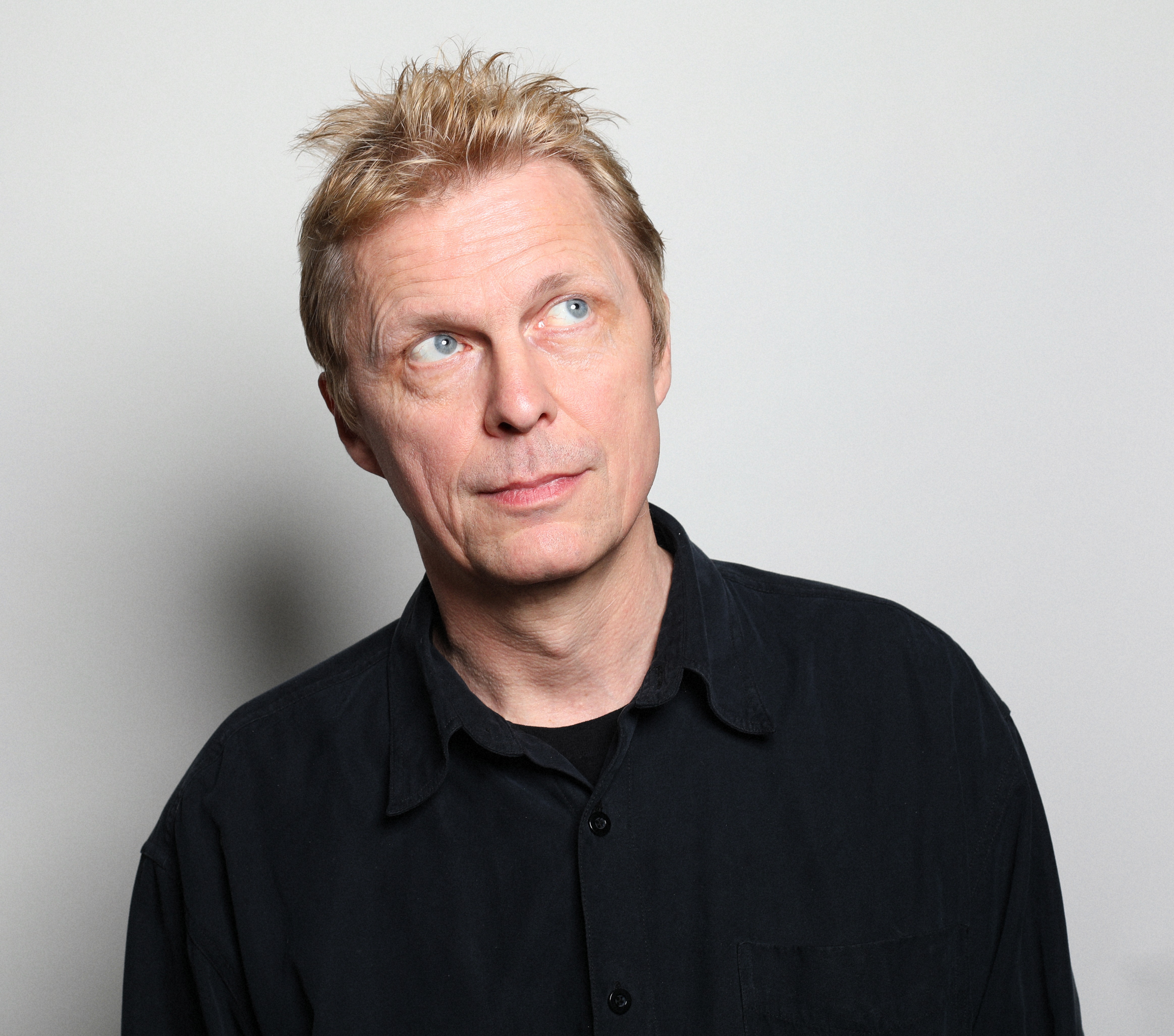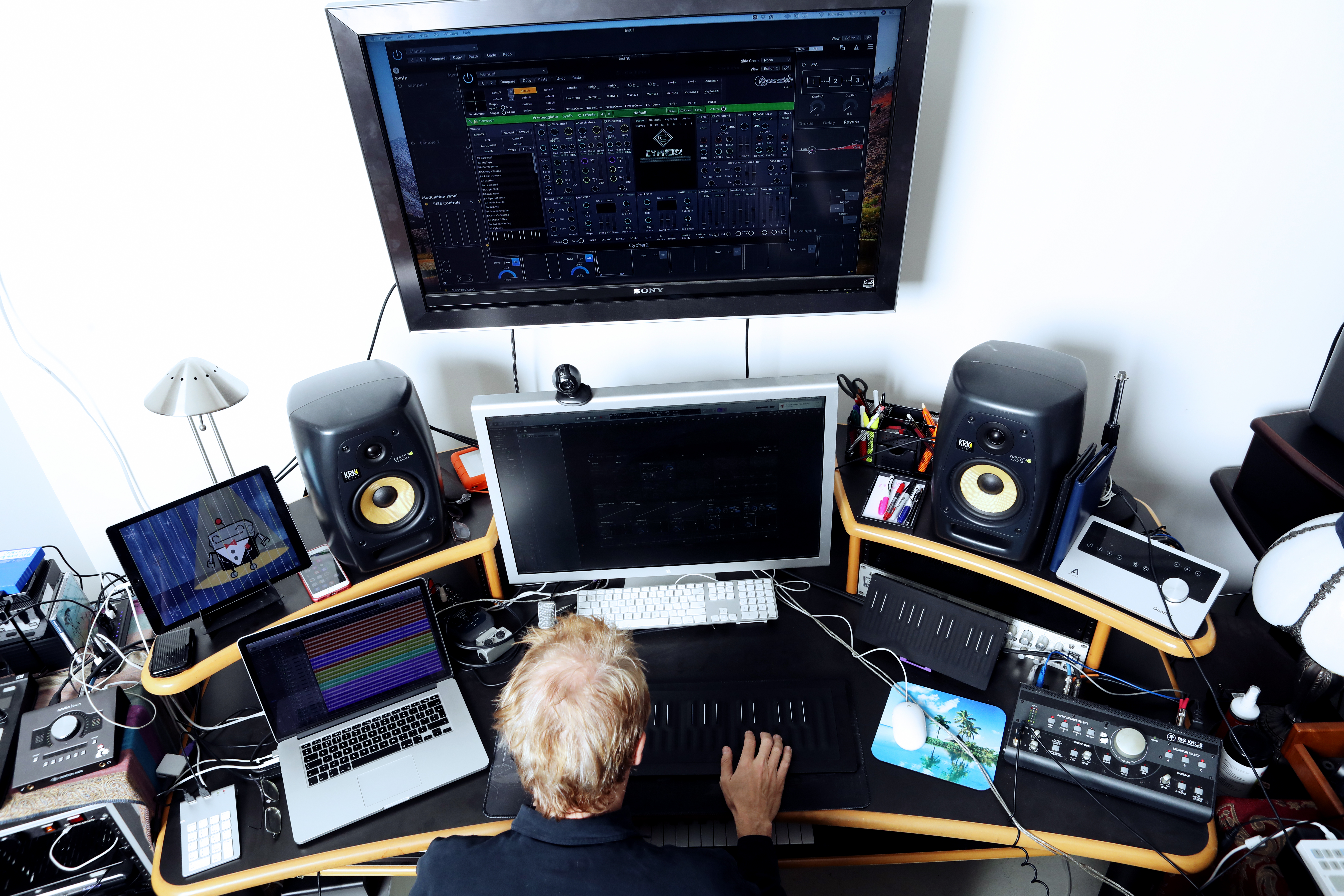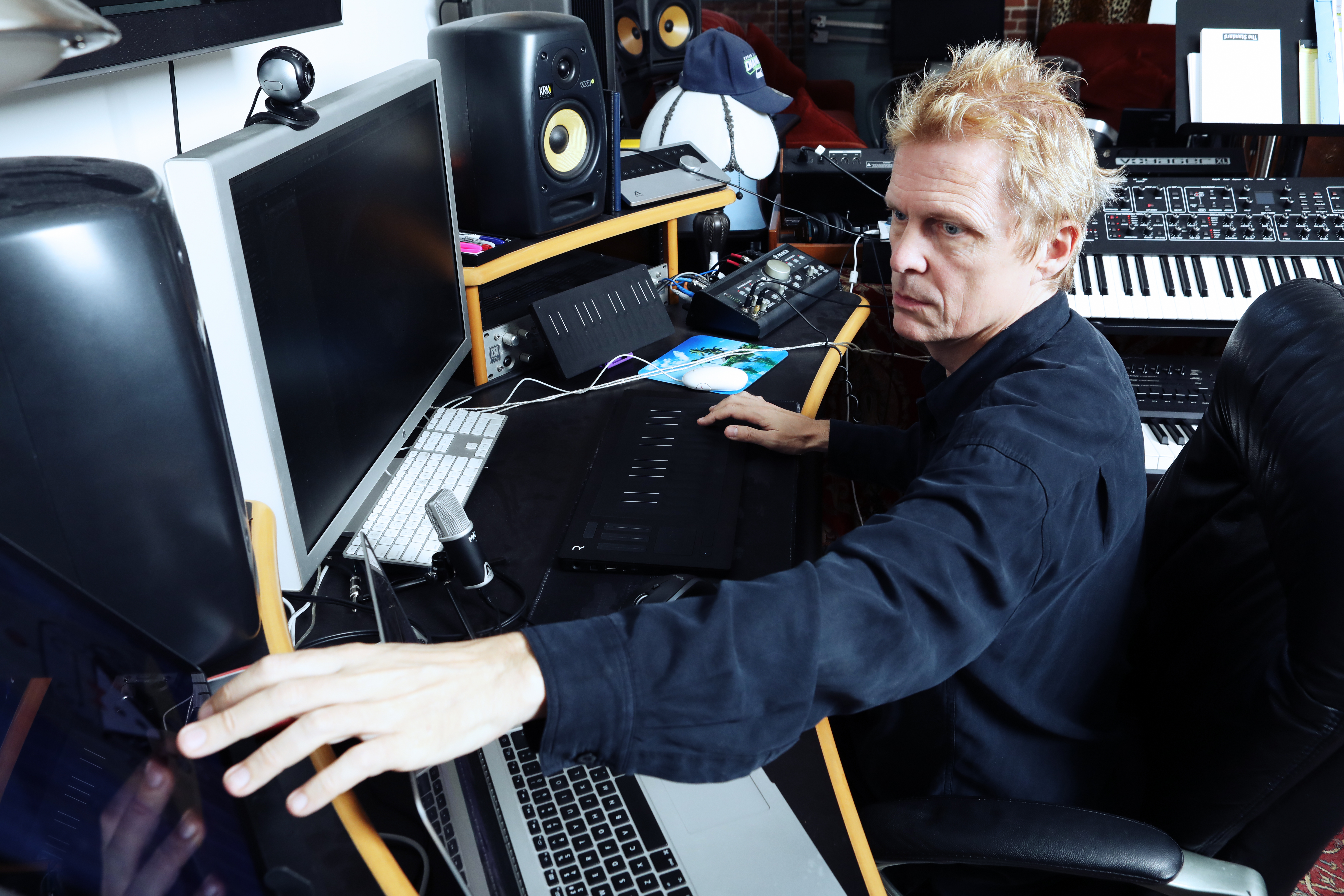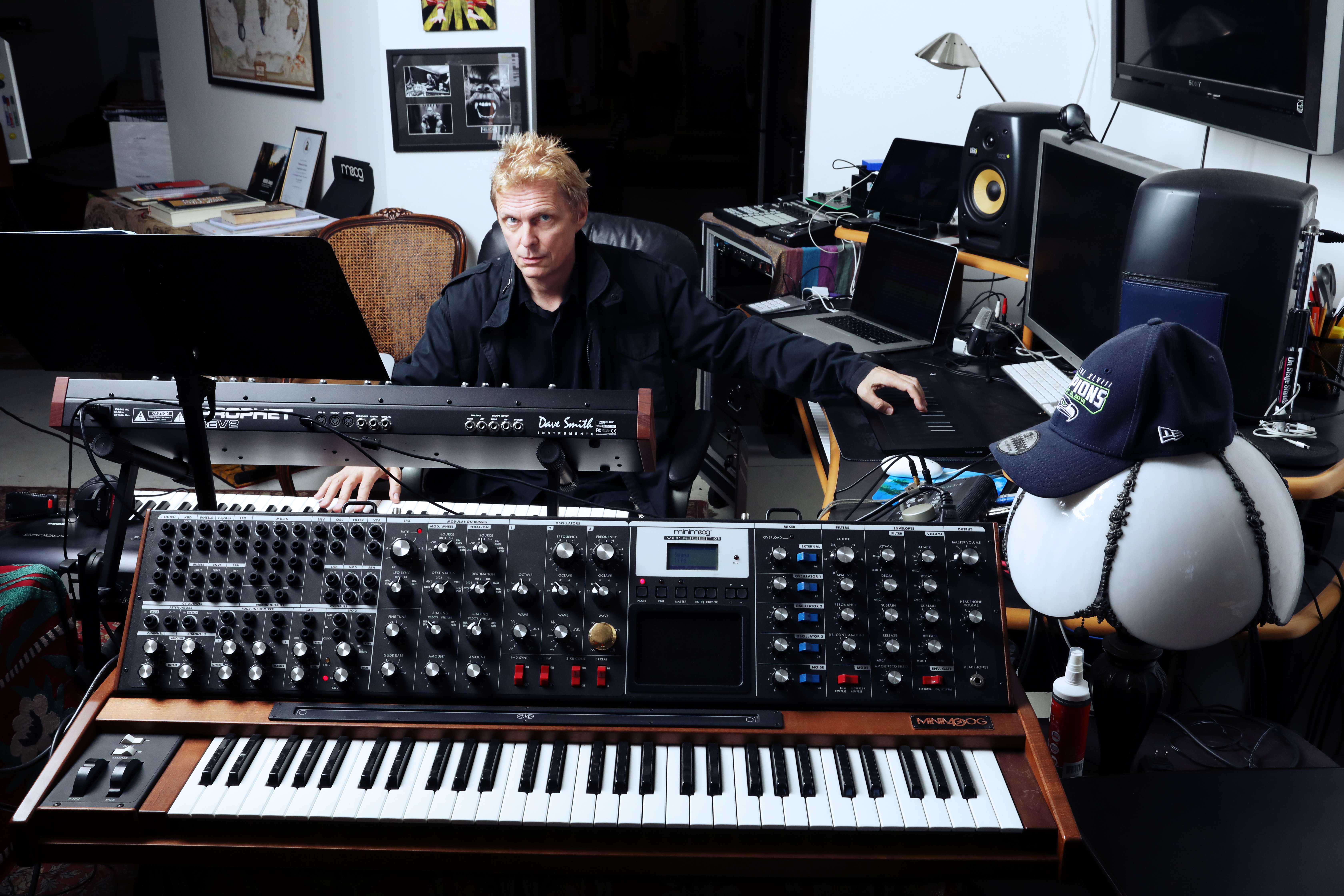The Seaboards of La La Land’s music director
How Marius de Vries introduced Ryan Gosling to the Seaboard GRAND
Marius in his Los Angeles studio with the Seaboard Block and Seaboard RISE.

Lasting only 15 seconds, it introduced the world to the ROLI Seaboard. “What is that black thing he’s playing on?” curious people asked across social media.
Ryan Gosling’s performance on the Seaboard in La La Land was remarkable, starting with the fact that the actor — who had only basic piano skills when the movie-musical’s director cast him — played his solo with aplomb as if he were actually a musician touring with the Seaboard GRAND.
The musician most responsible for the Seaboard’s arrival in La La Land, however, was Marius de Vries. The film’s music director is a veteran composer-producer. He won BAFTAs for his musical work in Baz Luhrmann’s Moulin Rouge! and Romeo + Juliet, and outside of Hollywood he has produced for artists like Rufus Wainwright and helped create new music for the English National Opera.
The Seaboard fascinated Marius since its launch in 2013. He describes how a chance encounter in his studio resulted in the Seaboard becoming a prop for the character of Sebastian, played by Ryan Gosling.
“We knew Seb was going to play a spectacular keyboard solo, and we wanted it to feel a little futuristic and stylized. A Moog would have felt retro, a keyboard controller boring. And I was just beginning my own love affair with the Seaboard. So it was around in the studio and caught Ryan's eye.”
“Then I just had to persuade Damien Chazelle [the director]. I had Ryan practice on it, and just set it up on the stage on the day of the shoot. Damien walked over and gave me a little smile and said 'ok.' And that was that.”
Seaboards remain a fixture in Marius’s home studio in Los Angeles. “I’ve moved into live-work mode,” he says. “My studio is also my home.” It’s an arrangement that helps maximize his work time amid travels that often takes him back back to the UK.
A Seaboard GRAND, Seaboard RISE, and Seaboard Block are all part of a setup that includes dozens of other synths and drum machines. “It’s the GRAND that I keep going back to. It’s what got me excited about the Seaboard before the serendipity of La La Land. I just loved the experience of playing it — the process of adapting keyboard technique to different expressive means.”
Marius uses the GRAND at the finishing stages of a project, while the RISE is more for sketching musical ideas. “Ordinarily if I’m scoring a scene in a movie, I’ll start with a cup of tea in one hand and the RISE in another. Starting with a Seaboard takes you in subtly different directions than you would otherwise. You can play around with intonation and think outside of a particular key.”
“I was just beginning my own love affair with the Seaboard. So it was around in the studio and caught Ryan's eye.“

“If I’m scoring a scene in a movie, I’ll start with a cup of tea in one hand and the Seaboard RISE in another“

While he plays his Seaboard GRAND standalone — “It’s literally on a stand, alone” — all of his Seaboards contribute to an integrated studio setup.
“The RISE is always plugged in, but front and center is the NI Komplete Kontrol 5 octave controller, with a big Kronos to the side of weighted key action — and an NI Maschine for pads.” His go-to DAWs and plugins include Logic, U-He, and Spectrasonics Omnisphere. He also has a collection of “old stuff like like EMS Synthi, ARP 2600, Matrix 12, MKS80, and MS20/50.”
Marius is still feeling a Hollywood afterglow from the fame of La La Land and its six Academy Awards — including Best Original Score. His recent work has moved in new directions. The head of the English National Opera has invited Marius to form a long-term collaboration of “combining and colliding opera with popular music and electronic music.”
Do any of his other projects call for a searing Seaboard solo from a movie star? It doesn't look likely, but he's taking the Seaboard on to other stages. “We’re trying to work it into a score for a Broadway show based on King Kong. Who knows, maybe we can persuade the pit band to take one.”
Alongside Marius' 3 Seaboards are a 5 octave NI Komplete Kontrol controller and a stack of vintage synths including the EMS Synthi, ARP 2600, Matrix 12, MKS80, and MS20/50.

Join the ROLI community